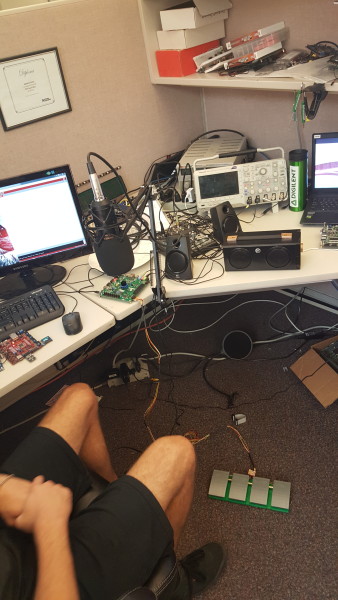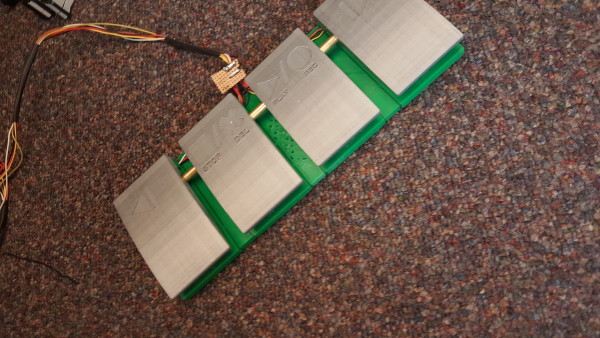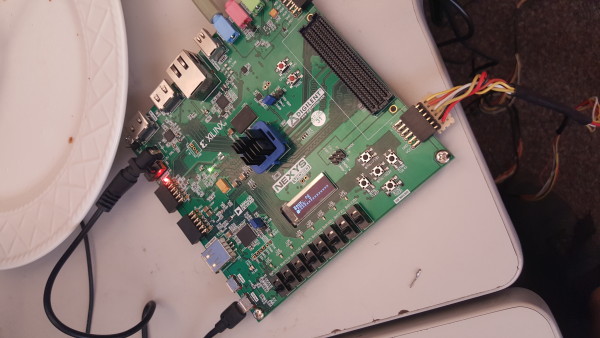Hanging around the Digilent offices, one is bound to see some pretty cool projects. Today we will be highlighting one very such project, Tommy and Sam’s homemade FPGA looper.

For those who are less musically inclined, a looper is a device used primarily in electroacoustic music to repeat a section of sound material. They are commonly used in digital samplers, sythesizers, sequencers, drum machines, tape machines, and delay units. For this project, Tommy and Sam created a custom one for themselves, using the Nexys Video.
The Nexys Video looper works by taking the audio input in and writes it to a first track, which sets the duration of the loop. Then it keeps looping, all while giving the user the ability to write to multiple banks. There are 16 different banks, each capable of holding a minute and a half of audio. It can take any aux input, and the user has the ability to control each track individually. The audio is stored in the memory of the FPGA, and the entire system is using only 10 percent of the Nexys Video’s full capability.
According to Tommy and Sam, the project took about a month to brainstorm and build.

Stay tuned for an upcoming Instructable on how to build your own looper!
And in the meantime, check out the Nexys Video Looper in action.


